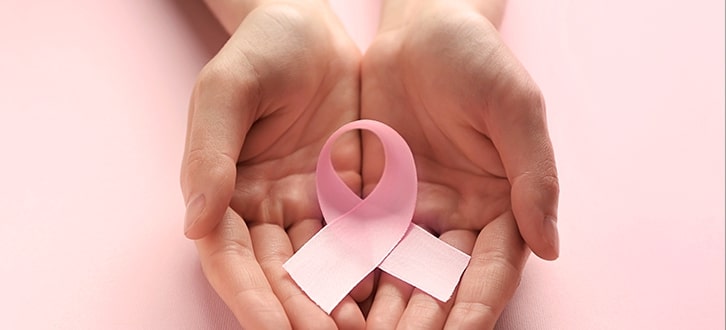Breast cancer awareness works
Author: CenterWell Pharmacy
Date Posted: Oct. 14, 2019

Make sure you and your loved ones don’t skip screenings
35 years ago, National Breast Cancer Awareness Month debuted with a straight-forward idea: increased awareness of breast-cancer risks, symptoms and prevention could help reduce the number of women (and men) who die from the disease.
It worked. Thanks to that increased awareness, and also to improved screening and treatment methods, deaths from breast cancer have been on a steady decline since the mid-80s. In 2017, a report from the American Cancer Society found that between 1989 and 2015 the rate of deaths from breast cancer fell 39%. That means over the course of those 26 years, 322,600 people who may have died of breast cancer did not, according to the report.¹
Keep up the good fight
The successes of the past decades are an encouraging reminder that early detection can save lives. When breast cancer is discovered before it spreads beyond the breast, the survival rate is 99%, according to the National Cancer Institute (NCI).²
To keep those numbers headed in the right directions (more survivors, lower mortality rates), it’s up to everyone to educate themselves and others about the importance of prevention, screening and early detection.
Prevention is key
The first and most important preventive step is to talk to your doctor about breast-cancer screenings and ask them about your possible risk factors for breast cancer. They’ll take into consideration things like your family history and genetics, your age and other factors. Then they’ll help you determine when it’s best to begin regular (usually annual) mammogram screenings.
Meanwhile, to also help lower your risk of breast cancer, the Mayo Clinic recommends:³
• Breast self-exams—knowing the shape and feel of your breasts and skin means you’re more likely to notice changes
• Drinking in moderation if at all
• Near-daily exercise
• Limiting post-menopausal hormone therapy
• Working to stay at a healthy weight
• Eating a healthy diet
If you feel something, say something
Regular home self-examinations and careful attention to any changes in your breasts is a big part of prevention. The Mayo Clinic advises you pay close attention to:⁴
• Changes in breast size or shape, including new lumps, thickening or swelling
• Changes in the skin, including dimpling, redness or pitting on the breast; or peeling, scaling, crusting or flaking around the nipple and areola
• A nipple that has become recently inverted or is discharging something other than milk
• Pain anywhere in the breast
If you notice any of those changes in your breasts, talk to your doctor right away.
Keeping up self-examinations and screenings helps keep breast-cancer mortality down—not just in October, but all year long.
Talk to your doctor and schedule a mammogram
Learn more about breast cancer screenings
Sources:
- Report: Breast Cancer Death Rates Down 39% Since 1989,” American Cancer Society, last accessed September 19, 2019, https://www.cancer.org/research/acs-research-news.html.
- “Survival Rates for Breast Cancer,” American Cancer Society, last accessed September 19, 2019, https://www.cancer.org/cancer/types/breast-cancer/understanding-a-breast-cancer-diagnosis/breast-cancer-survival-rates.html.
- “Breast Cancer,” The Mayo Clinic, last accessed September 19, 2019, https://www.mayoclinic.org/diseases-conditions/breast-cancer/symptoms-causes/syc-20352470.
- "Breast Cancer."